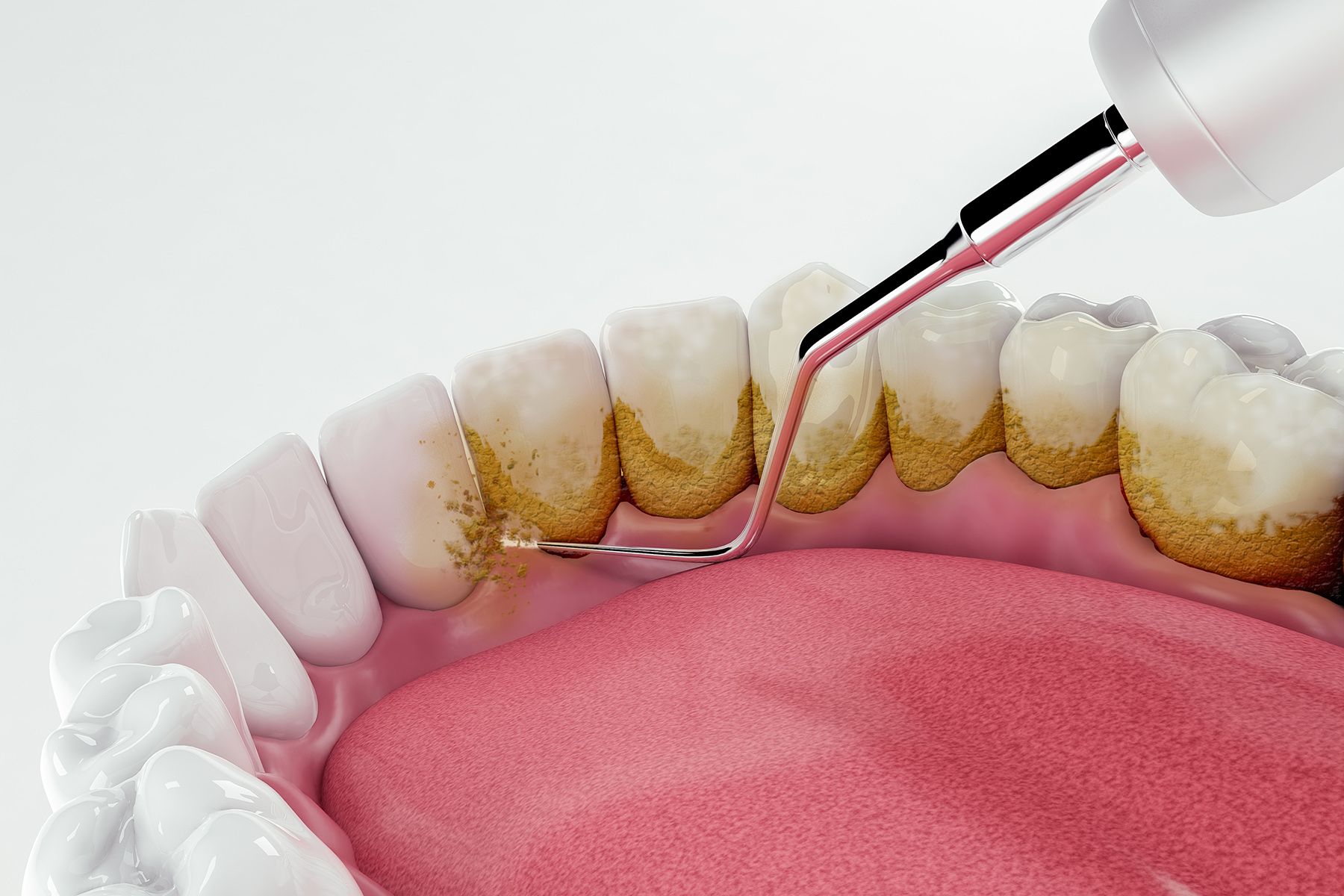Pioneering a New Era in Periodontal Care: Embracing Advanced Techniques and Interdisciplinary Collaborative Strategies
In the second installment of "Perio Power for the Hygienist", we have a comprehensive review of Jennifer Hirsch Doobrow, DMD, and Katrina Sanders' lecture on modern periodontology.
Pioneering a New Era in Periodontal Care: Embracing Advanced Techniques and Interdisciplinary Collaborative Strategies | Image Credit: © OSORIOartist - stock.adobe.com

Jennifer Hirsch Doobrow, DMD, and Katrina Sanders, RDH, presented an insightful lecture at the American Academy of Periodontology (AAP) 109th Annual Meeting in 2023, focusing on the evolution of periodontal care, the importance of precise diagnosis, and the integration of interdisciplinary approaches in managing periodontal disease. Their presentation challenges conventional practices and advocates for a more comprehensive and patient-centered approach.
Introduction
The session began with an introduction to Dr Doobrow, a board-certified periodontist, and Sanders, a clinical hygienist, author, and international speaker. As the chair of the AAP Hygiene Subcommittee and president of the Southern Academy of Periodontology, Dr Doobrow emphasized the need for audience feedback to enhance the hygiene learning hub—an essential educational resource on the AAP website specifically for dental hygienists. Sanders, serving
Perio Power for the Hygienist is a series of articles from the AAP focusing on key topics in the field of periodontics.

as a clinical liaison for AZPerio, emphasized her passion for elevating the dental profession through education and empowerment.
Dr Doobrow’s extensive experience in clinical periodontology and active involvement in professional organizations provide her with unique insights into the challenges and opportunities within periodontal care. Her work focuses on integrating new technologies and methodologies to improve patient outcomes. Sanders, drawing on her experience as a clinical hygienist and educator, emphasized the critical role of preventive care and patient education in managing periodontal health.
Challenging Conventional Periodontal Care
A provocative statement opened the discussion: the traditional approach to periodontal therapy, largely unchanged since the 1950s, is a myth. Sanders used the analogy of Dr. Emmett Brown’s DeLorean from “Back to the Future” to illustrate how little periodontal treatment has evolved over the decades. Despite advancements in technology and knowledge, the core approach—scaling and root planing with local delivery of irrigation—remains the same.
While these traditional methods have been effective to some extent, they do not fully address the complexities of periodontal disease in today’s diverse patient population. A one-size-fits-all approach is no longer sufficient. Periodontists must adopt more individualized treatment plans based on the specific needs and risk factors of each patient.
Historical Perspective on Periodontal Treatment
Reflecting on the 1950s, it was noted that dental hygienists treated oral inflammation with scaling, root planing, and local irrigation, much as they do today. Despite efforts to educate the public about the importance of regular dental visits, the prevalence of periodontal disease remains high. Modern periodontal care must evolve beyond these traditional methods to address current challenges effectively.
A historical overview of periodontal treatment highlighted significant milestones and advancements over the decades. While the basic principles of mechanical debridement and infection control have remained constant, understanding the underlying mechanisms of periodontal disease has evolved significantly. This evolution necessitates a more sophisticated approach to treatment that incorporates new scientific insights and technological innovations.
Prevalence and Impact of Periodontal Disease
The alarming prevalence of periodontal disease was highlighted, with data showing that nearly half of the adult population in the United States is affected. This prevalence may be even higher due to delays in dental visits and complications arising from the COVID-19 pandemic. Periodontists must acknowledge this high prevalence and adopt more effective strategies for prevention and treatment.
The broader implications of periodontal disease on systemic health were discussed, linking it to conditions such as cardiovascular disease, diabetes, and adverse pregnancy outcomes. Effective management of periodontal disease can have far-reaching benefits for overall health, underscoring the importance of integrating periodontal care with general healthcare practices.
To read the first installment of Perio Power for the Hygienist: “Genetic Insights and Advanced Treatments in Peri-Implantology: A Comprehensive Approach to Peri-Implant Health,” click here.
Re-Evaluating Communication and Diagnosis
A key point emphasized was the need to change the language used when diagnosing and communicating with patients about periodontal disease. Terms like "gum recession" and "bleeding" are insufficient to convey the severity of the condition. Instead, more direct language such as "bone and tissue loss" helps patients understand the seriousness of their condition. Minimizing the disease in conversations can lead patients to underestimate the need for treatment.
Clear and effective communication is crucial for fostering patient compliance and engagement. Visual aids such as diagrams and intraoral photos are recommended to illustrate the extent of periodontal damage and the potential consequences if left untreated. By framing the discussion in terms of overall health and quality of life, periodontists can motivate patients to take their periodontal health more seriously and adhere to prescribed treatment plans.
Addressing Gingival Inflammation and Periodontitis
Data indicated that a vast majority of patients experience gingival inflammation, a precursor to periodontitis. Recognizing and treating gingival inflammation early is crucial to prevent progression to periodontitis. This involves thorough patient education and consistent monitoring to ensure early intervention.
Dr Doobrow elaborated on the pathophysiology of gingival inflammation, explaining how bacterial biofilms trigger an immune response that, if uncontrolled, can lead to the destruction of supporting periodontal tissues. Various diagnostic tools and techniques for detecting gingival inflammation early were discussed, including periodontal probing, clinical assessments, and microbiological testing. Regular dental visits and professional cleanings are essential for preventing gingival inflammation from progressing to periodontitis.
Integration of Genetic Research
The emerging role of genetic research in periodontology was discussed, highlighting ongoing studies exploring genetic predispositions to periodontal disease. This knowledge could lead to more personalized treatment approaches. Genetic testing offers the potential to identify at-risk patients and tailor preventive and therapeutic strategies accordingly.
Genetic markers provide insights into an individual’s susceptibility to periodontal disease, allowing for more targeted interventions. Specific genes associated with inflammation, immune response, and tissue regeneration were discussed, along with the ethical considerations and practical challenges of implementing genetic testing in clinical practice.
Interdisciplinary Approach to Periodontal Care
An interdisciplinary approach to managing periodontal disease is essential. Collaboration between periodontists, general dentists, and other healthcare professionals, such as cardiologists and endocrinologists, is crucial. This approach addresses the systemic implications of periodontal disease and provides comprehensive care for patients.
Examples of successful interdisciplinary collaborations were provided, including the co-management of patients with diabetes or cardiovascular disease. Integrated care improves patient outcomes, enhances communication between healthcare providers, and fosters a more holistic approach to patient health. Building strong relationships with other healthcare professionals and advocating for the inclusion of periodontal assessments in routine medical evaluations are encouraged.
Practical Implications and Case Studies
Several case studies illustrated the practical application of these principles. One case involved a young patient with aggressive periodontitis who underwent full-mouth reconstruction with implants but developed severe peri-implantitis within 2 years. This case highlighted the need for careful patient selection, monitoring, and personalized treatment plans.
Another case involved a patient with uncontrolled diabetes and hypertension, illustrating the complexity of managing patients with multiple systemic conditions. The importance of understanding each patient’s unique challenges and tailoring treatment plans to address these issues comprehensively was emphasized. The use of adjunctive therapies, such as systemic antibiotics and host modulation agents, was discussed to enhance the effectiveness of periodontal treatment in medically compromised patients.
Advances in Diagnostic Tools
Advanced diagnostic tools, such as 3-dimensional imaging and salivary diagnostics, are critical in providing a comprehensive assessment of periodontal conditions. Staying abreast of technological advancements and integrating these tools into practice is necessary to improve diagnostic accuracy and treatment outcomes.
The use of high-sensitivity C-reactive protein markers and point-of-service A1C testing were highlighted as examples of how periodontists can gather more detailed information about a patient’s inflammatory status and diabetic control. These tools help in developing more precise and effective treatment plans. Emerging technologies, such as artificial intelligence and machine learning, offer potential for enhancing diagnostic capabilities and predicting treatment outcomes.
Comprehensive Patient Evaluation
A significant portion of the session focused on the comprehensive evaluation of patients. This includes a thorough medical history, periodontal charting, radiographic assessments, and salivary diagnostics. Detailed documentation and patient communication are essential to ensure a clear understanding of their condition and the proposed treatment plan.
The importance of performing routine oral cancer screenings and educating patients about the significance of these evaluations was also emphasized. The process should be transparent to patients, ensuring they understand the importance of each step. The use of digital tools and electronic health records to streamline documentation and enhance communication with patients was also highlighted.
Addressing Patient Compliance
Patient compliance in periodontal care remains a significant challenge. Clear communication and patient education are needed to ensure adherence to treatment plans. Visual aids and analogies help patients understand the implications of their condition and the importance of following the prescribed care regimen.
Strategies for improving patient compliance included personalized messages that resonate with patients' daily lives and responsibilities. Making patients feel invested in their care and helping them understand the long-term benefits of maintaining periodontal health were emphasized. Motivational interviewing and behavioral change techniques were also discussed as ways to enhance patient compliance and engagement.
Conclusion
Dr Doobrow and Sanders emphasized that a paradigm shift in periodontal care is essential. Moving beyond traditional methods and adopting a more comprehensive, patient-centered approach is necessary. This includes integrating genetic research, utilizing advanced diagnostic tools, and fostering interdisciplinary collaboration. Clear communication, thorough documentation, and patient education are critical in achieving optimal periodontal health outcomes.
By embracing these advanced strategies and fostering a collaborative approach, periodontists can significantly enhance the quality of care provided to their patients and contribute to the overall improvement of public health.